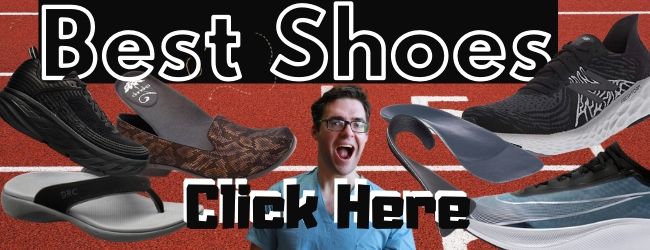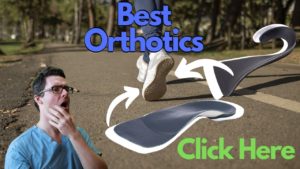Top of the Foot Pain:
Top of Foot Tingling [Causes, Symptoms & Best Treatment]
The top of the foot’s tingling is usually due to irritation of the medial dorsal cutaneous nerve. It runs along the top of your foot and big toe. Fix it 100%!
Table of Contents
Pain on top of the foot and tingling toes treatment video:
Top of the foot tingling and numb causes:
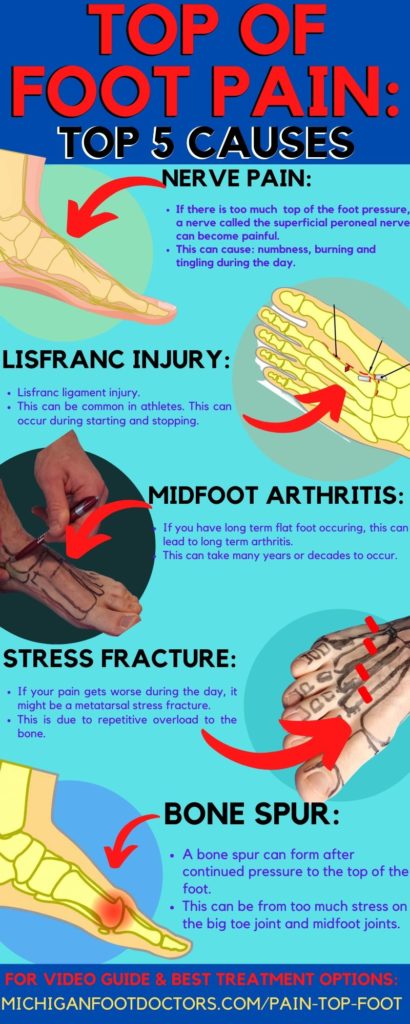
Top of the Foot Pain Picture Gallery:
The most common causes of top of the foot pain:
- Top of the foot nerve compression.
- A swollen top of the foot can also occur due to stress across the top of the foot.
- Lisfranc fracture or sprain.
- Sprained top of the foot.
- Top of the foot bone spur.
- Hallux rigidus or dorsal 1st metatarsal joint spur.
- Dorsal foot compression syndrome.
- Flat foot compression leading to osteoarthritis.
So, let’s look at the PICTURES!
Top of the Foot Tingling Overview:
- The top of the foot’s tingling is usually due to the medial dorsal cutaneous nerve (A continuation of the superficial peroneal nerve).
- This nerve covers the bump on top of your foot and runs along the top of your big toe. If a nerve is irritated and becomes numb, this is known as neuropraxia.
- Neuropraxia can take up to a month to get better, so treat it properly!
Symptoms:
- Numbness, burning, or tingling.
- Sharp shooting pain.
- Probably not sore and aching (but this can accompany the pain above)
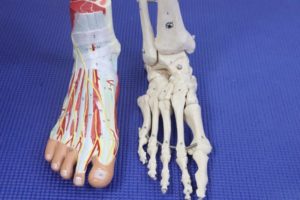
Diagnosis:
- Consider is biased, but we think the best person to see is a foot and ankle specialist called a podiatrist.
- We say this because we are podiatrists!
- The first thing to do is take a detailed history, such as how much they were, how much you are on your feet, and how the symptoms started In progress.
- At this point, we can perform a physical exam to evaluate whether it is a hard month or a soft bump and how it reacts to physical manipulation.
- There is also the ability to take a foot and ankle x-ray for your top-of-the-foot pain immediately while in the office.
- The x-ray will allow us to see if there are any bone problems or joint problems.
- We also can use a diagnostic ultrasound inside the clinic: this allows us to rule out any nerve, tendon, and muscle problems.
- This lets us treat the injured site immediately.
Causes:
This is only if one foot is in pain:
- Tight shoes compressing the area of just one leg.
- A bony bump on top of your foot.
- Poor biomechanics during walking.
- Cavus Foot.
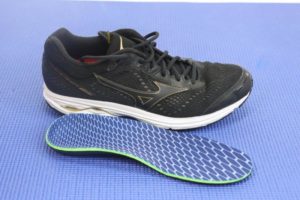
If both feet are radiating at night:
Peripheral Neuropathy:
If you have any of the following, think of peripheral neuropathy.
- Numbness in both feet equally.
- If both feet equal: consider peripheral neuropathy.
- Diabetes, alcoholism, or thyroid problems + almost any other systemic condition.
- Poor blood flow(especially smokers)
- Possible with older age
Specific Causes:
Metatarsal Exostosis: A hard bump
This is a fancy name for bone growth on top of your foot.
- The two bones at the joint can develop extra bone growth, which feels like a big lump on the top of your foot.
- It is usually associated with bone spurs or arthritis in your mid-foot.
- It is also common in high arched feet.
- This problem, unfortunately, is part of the bone, so it will either need surgery or accommodation.
- If it is really irritating you, this can cause medial dorsal cutaneous nerve irritation on top of your foot.
- This can cause numbness, burning, or tingling in the foot or the big toe.
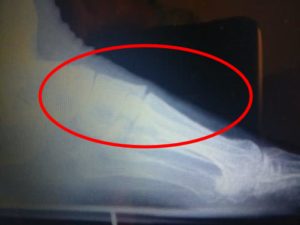
Sprained Top Of Foot:
- A sprain in the top of the foot or the arch is called a Lisfranc sprain.
- In most cases, it is usually only a sprain that lasts a couple of days to a couple of weeks.
- But in some cases, it may be essential to seek imaging & further treatment.
Arch Pain & Mid-Foot Pain:
- Arch pain is one of the most common sources of foot pain in the world.
- 15% of all people get it in their lives.
- This pain is usually worse in the morning & gets better after moving around for a little while.
- If you have pain after rest & in the morning, consider this!
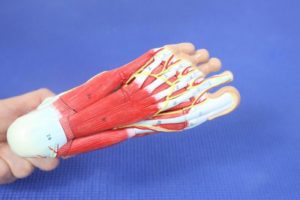
Ganglionic cyst – A soft bump:
- Ganglionic cysts are soft masses across the top of the foot which are not immediately dangerous!
- These are simply pockets of fluid that pouch out from the joints of your foot bones like a balloon.
- Treatment consists of draining and removing the pocket of fluid.
- But they should still check out by a podiatrist because there is a chance that they may be something a little more dangerous.
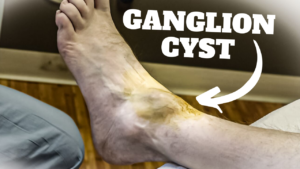
If this sounds like you, the internet is not the place for you to be getting advice! Get worked up by a good foot doctor or podiatrist because peripheral neuropathy could have a million different causes besides these. Learn more about peripheral neuropathy.
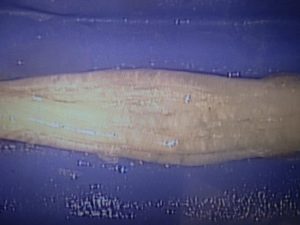
Top of the Foot Pain Surgery:
- Surgery to remove the bump on the top of your foot is the only sure way to prevent the bump from coming back, but these techniques will keep the nerve pain away.
Sharp tingling pain on top of foot Treatment:
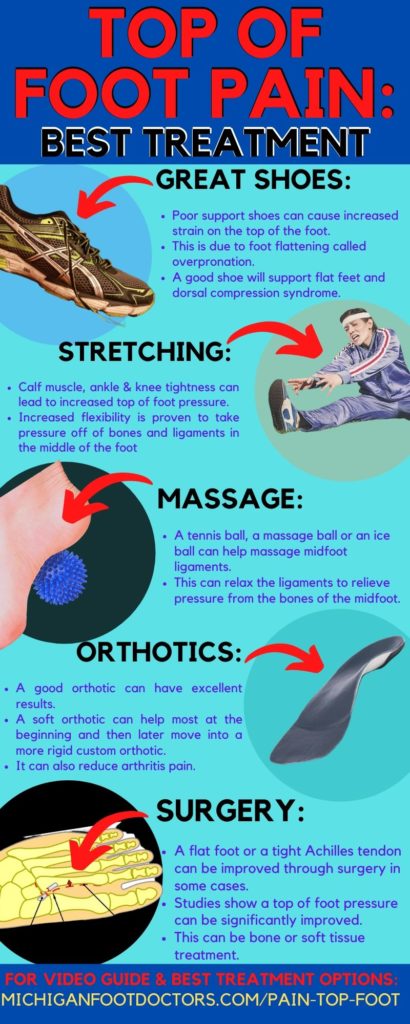
Top of the Foot Home Treatment:
- There are usually two phases to treating the top of the foot pain treatment.
- This doesn’t matter whether it’s an intermittent sharp pain on top of the foot, pain on top of the foot near toes, tendonitis on top of the foot, or a top of the foot bone spur. Treatment is all roughly very similar.
- The two phases of treatment include controlling the acute inflammation and correcting the biomechanics, which led to the problem in the first place.
- Great top-of-the-foot shoes and great orthotics lead to the prevention of dorsal compression syndrome. This prevents compression on top of the foot. It prevents the stretching on the bottom of the foot.
- This will also reduce your numbness, burning, and tingling pain.
Control Inflammation:
Massage & Ice Products:
- The metal ball is one of my personal favorites.
- This can work well for a bruised top of the foot.
- This is not a permanent solution. You still need to remove the stress off of the top of the foot.






Menthol Based Gels:
- Biofreeze is one of our favorites.
- These gels have been studied to work 2x as long as ice.
- This can also work as a great option for a bruised top of the foot or top of the foot extensor tendonitis.
- This is not a permanent solution. You still need to remove the stress off of the top of the foot.








Massage Sticks:
- These can work great for loosening your muscles.
- This allows less tightness and pressure on the ball of your foot.
- This works best for extensor tendonitis on the top of the foot.






Removing The Stress:
- The key is to prevent future pain.
- If you can get rid of the pain and swelling, this will let you start walking normally.
- If you can walk normally, the vast majority of your pain should gradually start to go away.
- This will limit dorsal compression syndrome and limit extensor tendonitis to the top of the foot.
Best Top of the Foot Pain Shoes:
- Getting a great supportive pair of shoes will ensure that pressure is removed from the top of the foot.
- There is much less compression appreciated.
- This is especially important if you have a swollen top of your foot, intermittent sharp pain on top of your foot, and top of the foot compression.
- Consider shoes combined with a good supportive orthotic for the best pain relief!
- The following link will show you what our favorites are.
The Best Top of the Foot Pain Orthotics:
- These are our recommended orthotics.
- There are different types of different shoes.
- Women’s shoes usually need a less bulky orthotic but allow for less correction.
- A full-length orthotic requires a running shoe, boot, or comfortable walking/dress shoe.
Best Full-Length Orthotics:








Best Dress Shoe Orthotics:






Best 3/4 Length Orthotics:


Get A Great Dynamic Stretch:
- It is possible to stretch on your own, but these products can also really help!
- This will take pressure off of the ball of your foot.








Get A Great Static Stretch:
- These devices are great for stretching while you are resting.
- This will also help take pressure off of the ball of your foot.






Top of the Foot Pain Trauma:
- If you have a sprain Of the foot, Lisfranc fracture, or a fracture to the top of the foot, you need to protect it.
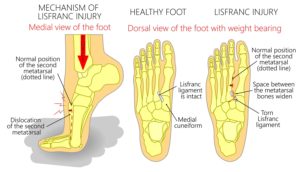
- The recommended way of doing this is to offload with a good supportive boot or cast.
- The best way to do this is, of course, to see your podiatrist and get evaluated with an x-ray, ultrasound, and potentially even an MRI or CT scan.
- If you cannot do so, it may benefit you to be in a cast, fractured boot, or even keep the weight off of it with a rolling knee scooter or other protective devices.
- We as podiatrists frequently take patients off work for a very long period of time when they suffer a traumatic injury. Unfortunately, there is no other way around us in labor jobs.
- If you have a sit-down job, there are ways to get people back to work quicker, but this can be impossible otherwise.
Top of the Foot Fracture Boot Treatment:
- There are pros and cons to using a boot to treat your foot pain. The pros are that your injured heel will hopefully have a chance to heal gradually! If you are immobilized too long, the cons are that you will gradually become stiff and overworked to your other leg. r
- Our favorite fracture boots and their supplies:








Offloading and Scooter treatment:
- These are favorite knee scooters and walking devices.
- If your Achilles tendonitis pain is severe, offloading can be very effective until the pain calms down.








Top of the Foot Pain:
Top of the Foot Pain:
